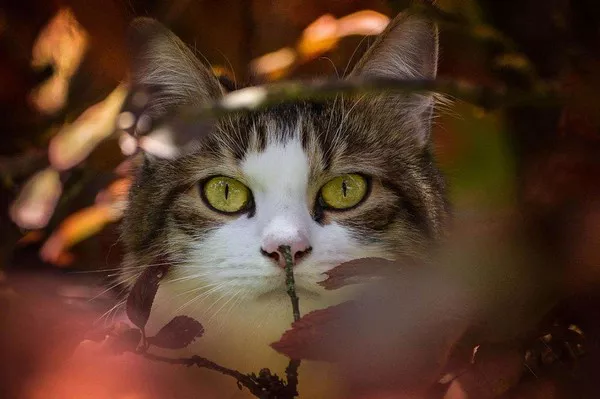Cornish Rex cats are a unique and beloved breed known for their distinctive crimped curly coat, large ears, and slender body. Originating in Cornwall, England, in the 1950s due to a genetic mutation, these cats have captured the hearts of many with their playful and friendly nature. In this article, we delve into the history, physical characteristics, and the array of colors and patterns that Cornish Rex cats can display.
History of the Cornish Rex
The story of the Cornish Rex begins in the rugged coastal region of Cornwall, England, where in the early 1950s, a curly-coated kitten named Kallibunker was born to a barn cat. Kallibunker’s unique appearance caught the attention of a local breeder, who recognized the potential for a new breed.
Through selective breeding, Kallibunker was mated with his mother to produce more curly-coated kittens. These offspring displayed the same distinctive features, confirming that the crimped coat was a hereditary trait. This marked the beginning of the Cornish Rex breed.
Over the years, breeders worked diligently to establish and refine the breed standard, focusing on preserving the Cornish Rex’s unique curly coat, large ears, and elegant body structure. Today, the Cornish Rex is recognized and cherished by cat enthusiasts worldwide.
Physical Characteristics
Cornish Rex cats are known for their unique appearance and athletic build. They typically stand between 8 to 12 inches tall at the shoulder and weigh between 6 to 10 pounds. Despite their slender frame, they possess remarkable strength and agility.
One of the most striking features of the Cornish Rex is their coat, which is soft, short, and curly. Their coat lacks the typical guard hairs found in most cat breeds, giving it a distinctive texture that resembles crushed velvet. This unique coat is a result of a genetic mutation that affects the hair follicles, causing them to be narrower and less rigid.
In addition to their physical attributes, Cornish Rex cats are renowned for their intelligence and playful demeanor. They are highly interactive and enjoy engaging in games and activities that stimulate their minds. Their affectionate nature makes them wonderful companions for individuals and families alike.
Coat Colors and Patterns
Cornish Rex cats come in a wide range of colors and patterns, adding to their allure and charm. From solid hues to intricate patterns, there is a Cornish Rex to suit every preference. Here are some examples of the colors and patterns that can be found in this versatile breed:
Blue: A shade between dark blue and charcoal gray, giving the cat a sleek and sophisticated appearance.
Black: While less common in Cornish Rex cats, a solid black coat can be striking and elegant.
Brown (Chocolate/Chestnut): This rare coloration is the result of a genetic mutation and adds a rich warmth to the cat’s appearance.
See Also:What Is an Applehead Cornish Rex: A Comprehensive Guide
Champagne: A light brown or gray color with subtle pink undertones, giving the cat a delicate and ethereal look.
Cinnamon: A light brown coat with reddish hues, adding a touch of warmth and vibrancy.
Cream: A soft and creamy color, reminiscent of butter or vanilla, that exudes warmth and comfort.
Frost: A unique and pale color that is soft and delicate, resembling the delicate petals of a flower.
Lavender: A soft, muted shade of purple that adds a touch of elegance and sophistication to the cat’s appearance.
White: Common in Cornish Rex cats, a pure white coat is often accented by striking blue or green eyes, adding to the cat’s beauty.
Calico: Defined by patches of black and red against a white background, creating a visually striking and vibrant appearance.
Tabby: One of the most common patterns in cats, tabby markings can vary in intensity and color, adding depth and character to the cat’s coat.
Pointed: Similar to Siamese cats, pointed cats have darker coloration on their ears, face, paws, and tail, creating a striking contrast against a lighter body.
Tortoiseshell: A blend of black, red, and cream colors, creating a unique and visually captivating coat pattern.
Bicolor: Characterized by large areas of white fur combined with patches of another color, creating a visually striking and dynamic appearance.
Smoke: With a silvery appearance, smoke cats have a dark base color with lighter-colored fur tips, creating a shimmering effect.
Deafness and White Cats
It is important to note that there is a correlation between white fur and blue eyes in Cornish Rex cats and deafness. This is due to a genetic condition known as congenital deafness, which is more common in white cats with blue eyes. While not all white Cornish Rex cats will be deaf, it is a risk factor that breeders and owners should be aware of.
In conclusion, Cornish Rex cats are a unique and fascinating breed known for their distinctive appearance, playful personality, and wide range of coat colors and patterns. Whether you prefer a sleek and sophisticated blue or a vibrant and eye-catching calico, there is a Cornish Rex cat to suit every taste. With their intelligence, affectionate nature, and striking good looks, it’s no wonder that Cornish Rex cats are cherished by cat lovers around the world.
Related Topics:























